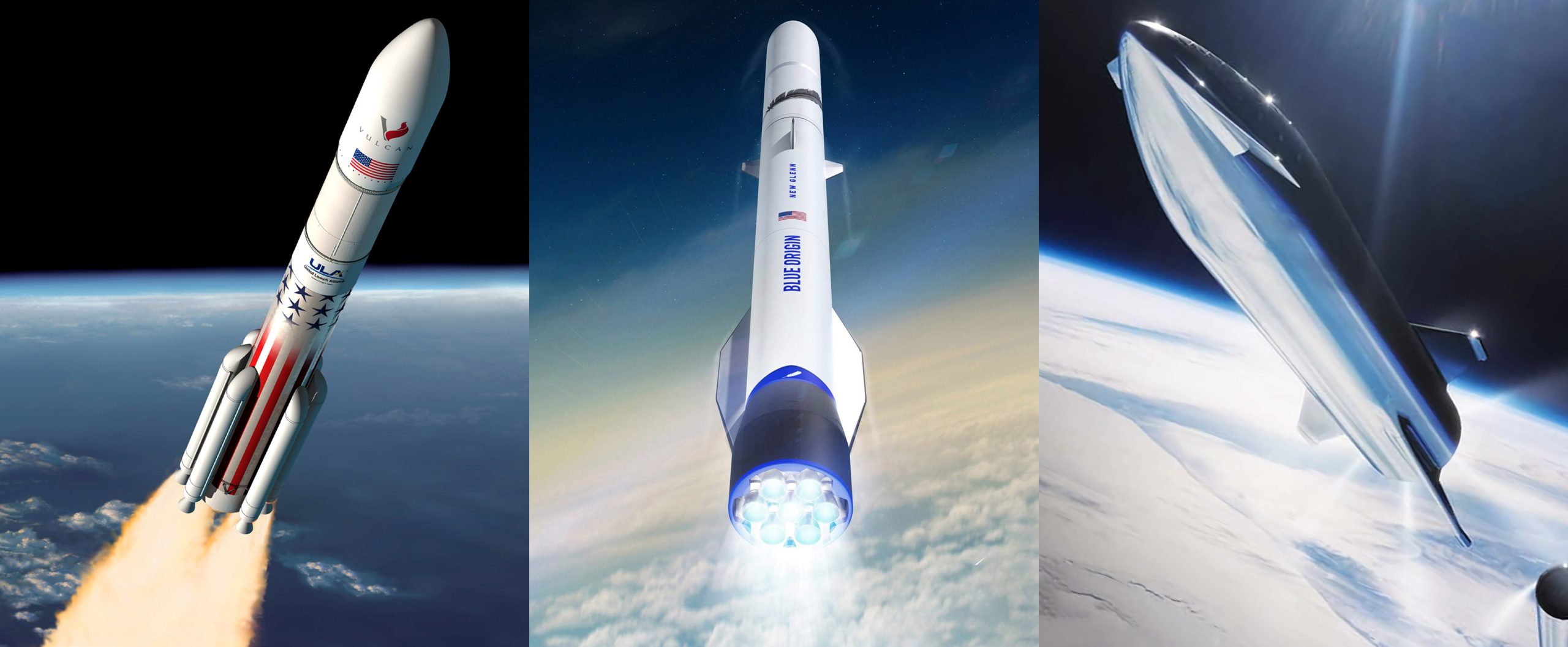
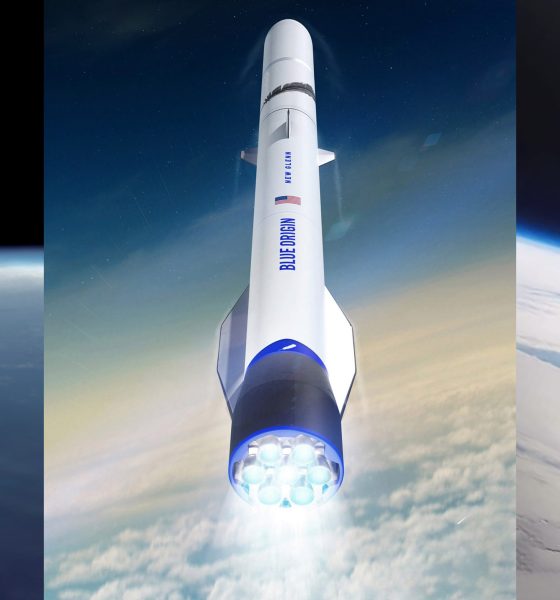
News
SpaceX, Blue Origin, and ULA make major progress in commercial megarocket space race
A new generation of space race is currently underway, but this time it’s not a race to determine which country will reach orbit first, but rather which spaceflight company will successfully reach orbit first with the world’s second generation of super-heavy launch vehicles (SHLVs).
SpaceX, United Launch Alliance (ULA), Blue Origin, and NASA all have plans to build and operate their own SHLV rockets. All entities are deep into design and development and are, for the most part, at various stages of assembly and integration of their first flight hardware, offering an excellent opportunity to compare and contrast the differing approaches at work.
While NASA and ULA are developing rockets featuring an expendable single core supported by solid rocket boosters, SpaceX and Blue Origin have developed reusable designs that will utilize an enormous single core booster powered by multiple engines.
SpaceX: Starship/Super Heavy
Currently the world’s only builder and operator of a super-heavy launch vehicle (Falcon Heavy), SpaceX’s next-generation rocket is undoubtedly the most well known.
The design of SpaceX’s next-generation Starship & Super Heavy rocket is by far the most ambitious. According to company CEO Elon Musk, the new rocket will be comprised of a massive booster deemed “Super Heavy”, featuring as many as 35 Raptor engines capable of producing a total of more than 70,000 kN (15.7M lbf) of thrust at liftoff. The rocket’s upper stage is known as Starship and will be a fully-reusable crew and cargo transport vehicle powered by up to 6 Raptors – 3 sea level-optimized engines and 3 vacuum-optimized engines.
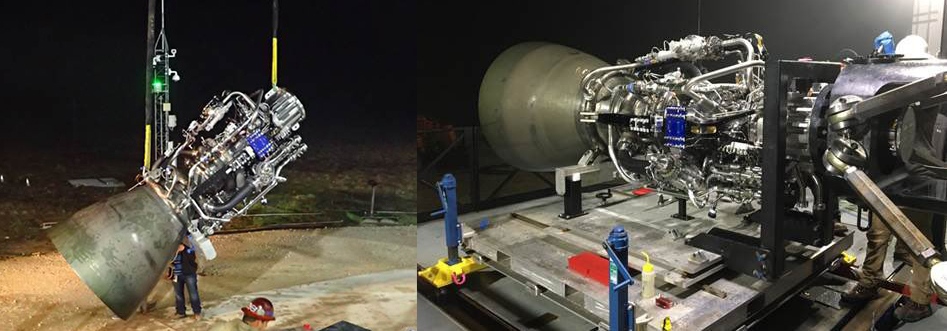
Per a September 2018 design update, Starship and Super Heavy will stand 118 meters (387ft) tall and will be able to launch a minimum of 100 metric tons (220,000 lb) to Low Earth Orbit in a fully reusable configuration, in which both the booster and ship return to Earth for recovery and reuse. On its own, Starship will stand at least 55 meters tall and feature a massive payload bay (or crew section) with a usable volume of no less than 1000 cubic meters (~35,000 ft3). The now-outdated 2018 design also featured almost 90 cubic meters of unpressurized cargo space, a bet less than nine times as much SpaceX’s operational Cargo Dragon spacecraft.
Although CEO Elon Musk has stated that the design of Starship’s legs and control surfaces has since changed, including the addition of legs to Super Heavy boosters, the upper stage’s 2018 design featured two actuating canards and fins/legs, two of which actuate a bit like flapping wings.
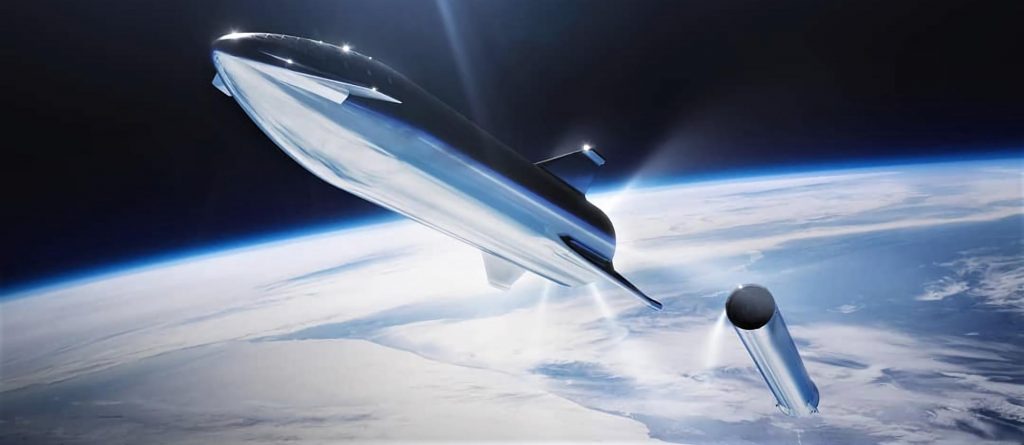
Currently, SpaceX is actively building two orbital Starship prototypes at two separate facilities in Cocoa Beach, Florida and Boca Chica, Texas, as well as an unusual low-fidelity prototype known as Starhopper. Outfitted with a lone Raptor engine (SN06), Starhopper very recently completed a successful 20-meter hop, also the vehicle’s first untethered test flight.
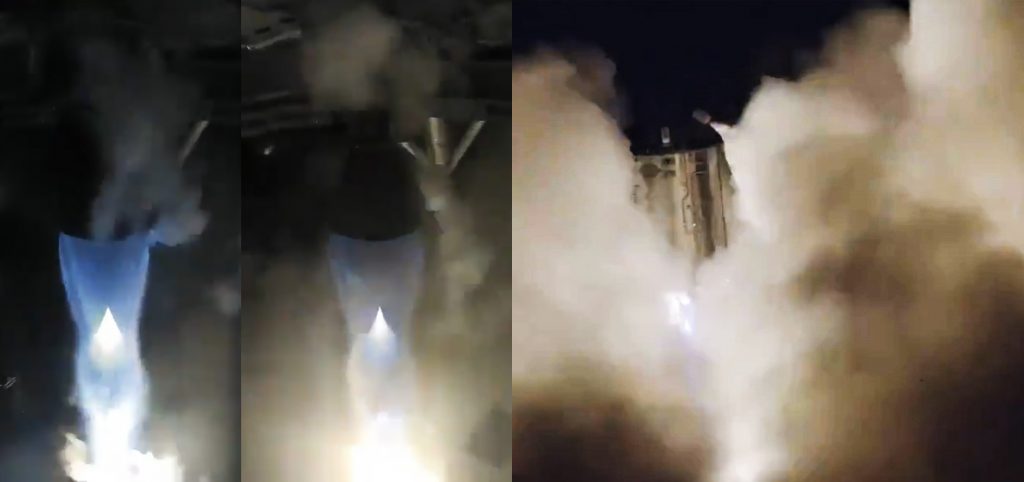
According to Musk, Starhopper is being prepared for a second untethered flight as early as August 16th, in which the rocket will reach a maximum altitude of up to 200 meters (650 ft) and perform a small divert, landing on an adjacent landing pad. Musk also has plans to present a major update on the status of Starship during an official event, scheduled to occur on August 24th in Boca Chica, TX. Aside from hundreds of disconnected snippets in the form of Musk’s prolific tweets, this will mark the first official presentation on Starship since SpaceX made the radical leap from carbon fiber to stainless steel.
SpaceX has taken a truly unprecedented approach to Starship and Super Heavy production and is currently assembling two full-scale Starship prototypes (Mk1 and Mk2) outside with little to no cover, although some spartan covered production facilities are simultaneously being built.
Blue Origin: BE-4 for all
On the near-opposite side of the spectrum, Blue Origin and ULA have formed a partnership in the sense that both companies will ultimately use the same Blue Origin-built engines to power the boosters of their own next-generation launch vehicles. ULA has decided to acquire Blue-built BE-4 engines for its Vulcan Heavy rocket, motivated primarily by the fact that the company will no longer be able to legally import the Russian-built RD-180 used on Atlas V after 2022 as a result of US sanctions.
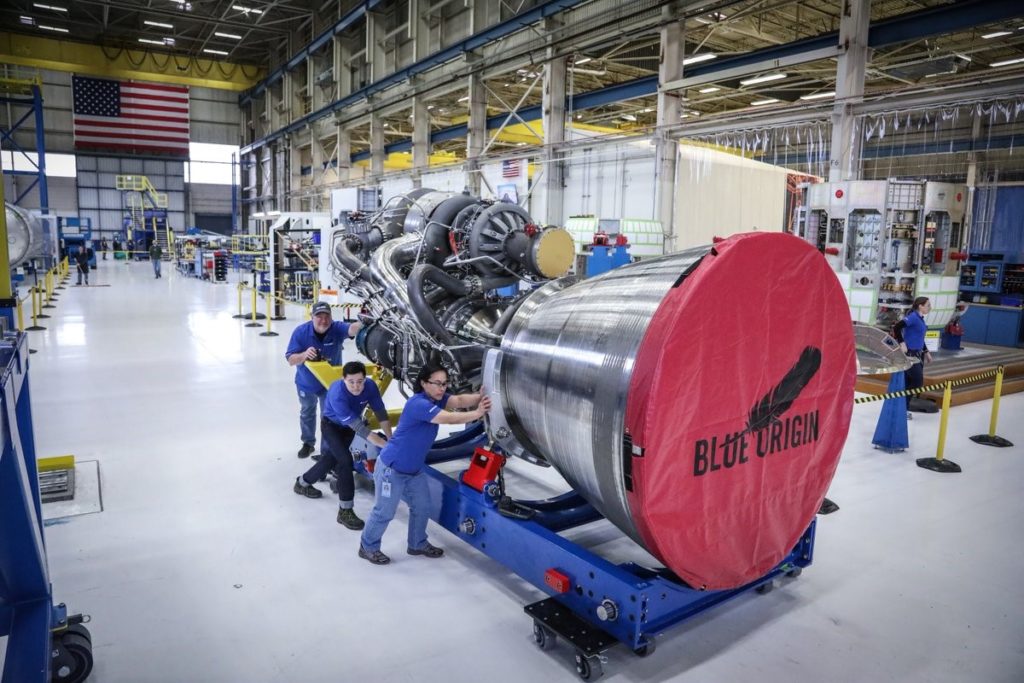
First and foremost, though, Blue Origin is developing BE-4 as the primary propulsion of the company’s own two-stage super heavy-lift rocket, known as New Glenn. New Glenn’s first stage will be powered by 7 of the extremely powerful oxygens, utilizing liquefied natural gas (LNG) and liquid oxygen to produce at least 2,450 kN (550,000 lbf) of thrust. Altogether, New Glenn will lift off with a maximum thrust of 17,100 kN (3.85m lbf) of thrust at sea level.
Unintuitively, New Glenn will actually produce a full 33% less thrust than SpaceX’s Falcon Heavy (~23,000 kN or 5.1M lbf) at liftoff but will likely be able to crush Falcon Heavy’s performance to higher orbits while still in a reusable configuration. This is thanks in large part to the greater efficiency of a single-core rocket, as well as the greater efficiency of its methane-powered BE-4 boost-stage engines and hydrogen-powered BE-3U upper stage engines. According to Blue, New Glenn will be able to launch 45,000 kg to LEO and 13,000 kg to GTO while still recovering the booster, compared to Falcon Heavy’s 8,000-10,000 kg GTO performance.
New Glenn will stand 95 meters (313 ft) tall and feature the largest payload fairing in operation, measuring 7m (23 ft) wide and in diameter. New Glenn’s booster will follow in the footsteps of Blue Origin’s relatively tiny New Shepard and will rely on actuating fins for in-atmosphere maneuvering, as well as two fixed wing-like strakes that will partially function as wings during recovery. New Glenn will also feature six retractable landing legs and land on a modified ship, much like SpaceX’s Falcon family.
While Blue Origin has scarcely published a word or photo on New Glenn’s production progress since its September 2016 reveal, the company does provide small updates on the status of its BE-4 engine every few months, including a photo of a recent full-power engine test completed on August 2nd at Blue’s Van Horn, Texas facilities.
ULA: Vulcan Heavy
ULA’s next-generation Vulcan Heavy rocket will feature two such BE-4 engines but will be fully expendable for at least 4-6 years after its nominal 2021 launch debut. ULA will continue to lean on their well-worn preference for supplementing liquid propulsion with 2-6 strap-on solid rocket boosters (SRBs), adding as much as ~12,000 kN (2.7M lbf) to booster’s two BE-4s, themselves producing 4,800 kN (1.1M lbf) of thrust
In its largest configuration, Vulcan Heavy will stand 69.2 m (227 ft) tall – just a tad shorter than Falcon 9 – and be capable of launch up to 15 tons (~33,000 lb) to GTO and 30.3 tons (67,000 lb) to LEO.
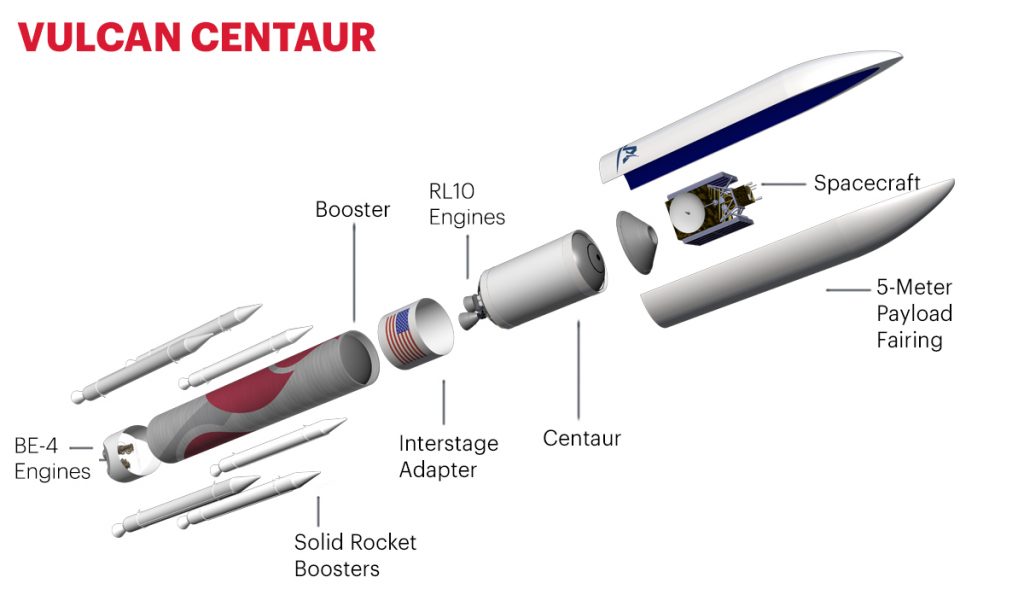
ULA CEO Tory Bruno recently took to Twitter to provide a small Vulcan development update, revealing that the first Vulcan booster was recently completed at the company’s Decatur, Alabama factory. This particularly booster is a structural test article (STA) and will never fly, but it’s still a huge milestone for ULA’s next-generation rocket.
The photos give a great idea of scale as the Vulcan booster is pictured alongside one of the company’s significantly smaller Atlas V booster, 3.8m compared to Vulcan’s 5.4m diameter.

Ultimately, this modern space race will hopefully benefit the spaceflight industry as a whole, particularly with respect to the introduction of New Glenn, hopefully giving SpaceX’s reusable Falcon 9 and Heavy rockets some real technological competition. ULA’s Vulcan is aiming for a H1 2021 debut, followed by New Glenn in late-2021 or 2022.
SpaceX’s Falcon Heavy is already operational and just completed its third launch in June 2019, with several more launch contracts on the books from late-2020 onwards. Its Starship/Super Heavy rocket is in a bit of a chaotic state at the moment, but CEO Elon Musk believes an orbital launch attempt could come as early as early-2020. Meanwhile, NASA is very slowly making its way to the launch debut of its Space Launch System (SLS) rocket, likely to slip into 2022.
With any luck, the early 2020s will be greeted by the operational debuts of two, three, four, or even more extremely capable rockets offering largely unprecedented launch costs. For now, we wait…
Check out Teslarati’s Marketplace! We offer Tesla accessories, including for the Tesla Cybertruck and Tesla Model 3.

Elon Musk
Elon Musk’s X will start using a Tesla-like software update strategy
The initiative seems designed to accelerate updates to the social media platform, while maintaining maximum transparency.

Elon Musk’s social media platform X will adopt a Tesla-esque approach to software updates for its algorithm.
The initiative seems designed to accelerate updates to the social media platform, while maintaining maximum transparency.
X’s updates to its updates
As per Musk in a post on X, the social media company will be making a new algorithm to determine what organic and advertising posts are recommended to users. These updates would then be repeated every four weeks.
“We will make the new 𝕏 algorithm, including all code used to determine what organic and advertising posts are recommended to users, open source in 7 days. This will be repeated every 4 weeks, with comprehensive developer notes, to help you understand what changed,” Musk wrote in his post.
The initiative somewhat mirrors Tesla’s over-the-air update model, where vehicle software is regularly refined and pushed to users with detailed release notes. This should allow users to better understand the details of X’s every update and foster a healthy feedback loop for the social media platform.
xAI and X
X, formerly Twitter, has been acquired by Elon Musk’s artificial intelligence startup, xAI last year. Since then, xAI has seen a rapid rise in valuation. Following the company’s the company’s upsized $20 billion Series E funding round, estimates now suggest that xAI is worth tens about $230 to $235 billion. That’s several times larger than Tesla when Elon Musk received his controversial 2018 CEO Performance Award.
As per xAI, the Series E funding round attracted a diverse group of investors, including Valor Equity Partners, Stepstone Group, Fidelity Management & Research Company, Qatar Investment Authority, MGX, and Baron Capital Group, among others. Strategic partners NVIDIA and Cisco Investments also continued support for building the world’s largest GPU clusters.
News
Tesla FSD Supervised wins MotorTrend’s Best Driver Assistance Award
The decision marks a notable reversal for the publication from prior years, with judges citing major real-world improvements that pushed Tesla’s latest FSD software ahead of every competing ADAS system.

Tesla’s Full Self-Driving (Supervised) system has been named the best driver-assistance technology on the market, earning top honors at the 2026 MotorTrend Best Tech Awards.
The decision marks a notable reversal for the publication from prior years, with judges citing major real-world improvements that pushed Tesla’s latest FSD software ahead of every competing ADAS system. And it wasn’t even close.
MotorTrend reverses course
MotorTrend awarded Tesla FSD (Supervised) its 2026 Best Tech Driver Assistance title after extensive testing of the latest v14 software. The publication acknowledged that it had previously criticized earlier versions of FSD for erratic behavior and near-miss incidents, ultimately favoring rivals such as GM’s Super Cruise in earlier evaluations.
According to MotorTrend, the newest iteration of FSD resolved many of those shortcomings. Testers said v14 showed far smoother behavior in complex urban scenarios, including unprotected left turns, traffic circles, emergency vehicles, and dense city streets. While the system still requires constant driver supervision, judges concluded that no other advanced driver-assistance system currently matches its breadth of capability.
Unlike rival systems that rely on combinations of cameras, radar, lidar, and mapped highways, Tesla’s FSD operates using a camera-only approach and is capable of driving on city streets, rural roads, and freeways. MotorTrend stated that pure utility, the ability to handle nearly all road types, ultimately separated FSD from competitors like Ford BlueCruise, GM Super Cruise, and BMW’s Highway Assistant.
High cost and high capability
MotorTrend also addressed FSD’s pricing, which remains significantly higher than rival systems. Tesla currently charges $8,000 for a one-time purchase or $99 per month for a subscription, compared with far lower upfront and subscription costs from other automakers. The publication noted that the premium is justified given FSD’s unmatched scope and continuous software evolution.
Safety remained a central focus of the evaluation. While testers reported collision-free operation over thousands of miles, they noted ongoing concerns around FSD’s configurable driving modes, including options that allow aggressive driving and speeds beyond posted limits. MotorTrend emphasized that, like all Level 2 systems, FSD still depends on a fully attentive human driver at all times.
Despite those caveats, the publication concluded that Tesla’s rapid software progress fundamentally reshaped the competitive landscape. For drivers seeking the most capable hands-on driver-assistance system available today, MotorTrend concluded Tesla FSD (Supervised) now stands alone at the top.
News
Elon Musk’s Grokipedia surges to 5.6M articles, almost 79% of English Wikipedia
The explosive growth marks a major milestone for the AI-powered online encyclopedia, which was launched by Elon Musk’s xAI just months ago.

Elon Musk’s Grokipedia has grown to an impressive 5,615,201 articles as of today, closing in on 79% of the English Wikipedia’s current total of 7,119,376 articles.
The explosive growth marks a major milestone for the AI-powered online encyclopedia, which was launched by Elon Musk’s xAI just months ago. Needless to say, it would only be a matter of time before Grokipedia exceeds English Wikipedia in sheer volume.
Grokipedia’s rapid growth
xAI’s vision for Grokipedia emphasizes neutrality, while Grok’s reasoning capabilities allow for fast drafting and fact-checking. When Elon Musk announced the initiative in late September 2025, he noted that Grokipedia would be an improvement to Wikipedia because it would be designed to avoid bias.
At the time, Musk noted that Grokipedia “is a necessary step towards the xAI goal of understanding the Universe.”
Grokipedia was launched in late October, and while xAI was careful to list it only as Version 0.1 at the time, the online encyclopedia immediately earned praise. Wikipedia co-founder Larry Sanger highlighted the project’s innovative approach, noting how it leverages AI to fill knowledge gaps and enable rapid updates. Netizens also observed how Grokipedia tends to present articles in a more objective manner compared to Wikipedia, which is edited by humans.
Elon Musk’s ambitious plans
With 5,615,201 total articles, Grokipedia has now grown to almost 79% of English Wikipedia’s article base. This is incredibly quick, though Grokipedia remains text-only for now. xAI, for its part, has now updated the online encyclopedia’s iteration to v0.2.
Elon Musk has shared bold ideas for Grokipedia, including sending a record of the entire knowledge base to space as part of xAI’s mission to preserve and expand human understanding. At some point, Musk stated that Grokipedia will be renamed to Encyclopedia Galactica, and it will be sent to the cosmos.
“When Grokipedia is good enough (long way to go), we will change the name to Encyclopedia Galactica. It will be an open source distillation of all knowledge, including audio, images and video. Join xAI to help build the sci-fi version of the Library of Alexandria!” Musk wrote, adding in a later post that “Copies will be etched in stone and sent to the Moon, Mars and beyond. This time, it will not be lost.”








